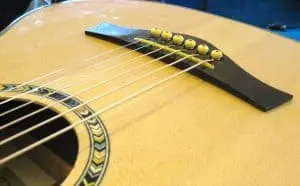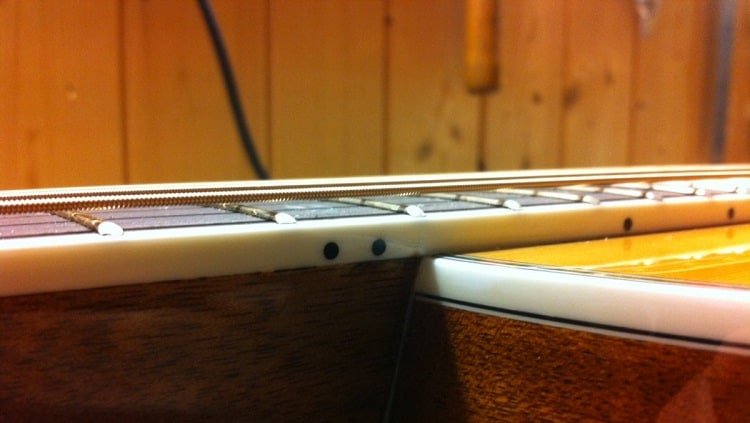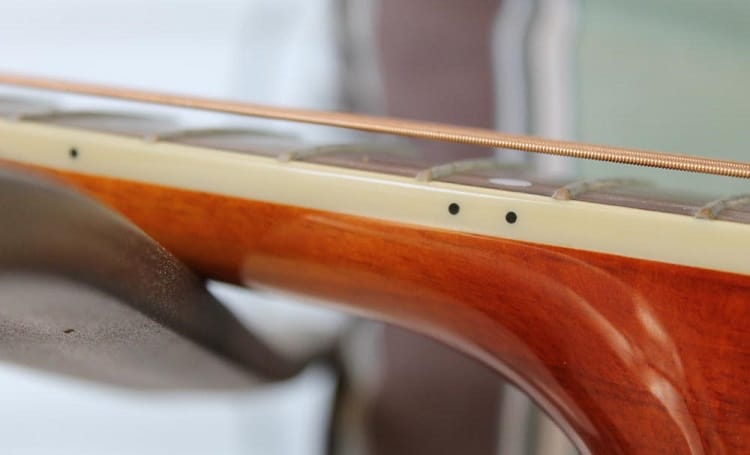 Before you begin adjusting the guitar action, you must know which problem caused the high action on the guitar and why that must be reset.
Before you begin adjusting the guitar action, you must know which problem caused the high action on the guitar and why that must be reset.
Without you knowing what affects your instrument, it can be difficult to make the diagnostics about those problems.
Here, we will reveal the main causes of this and also explain how to lover action on acoustic guitar.
The Causes:
Humidity And Changes In Temperature
The guitars are made from wood and that means they are affected by humidity and temperature. Acoustic kinds of guitars are mostly affected by the changes in humidity.
Rapid and drastic changes will certainly change the wood structure and shape. And, when that air gets somewhat humid, your instrument will truly soak up some water from the air.
String Tension Kind Of Changes.
Strings really put a big amount of problematic tensions on the guitar neck. They change from low tension to the opposite high and contrary. Strings can cause some back bow, and also a relief for the neck, so, they are certainly a cause of some problems with the guitar action.
Bad Use
Even in the case that you don’t damage or abuse your instrument, some signs of age and wear will probably show up. So, eventually, some heavy playing can really wear down some nuts or saddle pieces. That can certainly cause some problems in the field of the nasty guitar action.

Path:
There are exactly three steps if you want to completely set the action. So don’t be easily fooled by your talk with some salesman. Because if you want the complete action adjustment, then you must check and also adjust three of those guitar areas: nut, truss rod, and also the bridge.
Adjust The Guitar’s Truss Rod.
Check guitar action and also adjust its truss rod. And, if you also adjust that truss rod, with your action, is to remain good, in that case there you don’t have to move to those next following steps. Because that alone will save you from doing the additional work with other guitar parts.
Working With The Nut And The Bridge
After your first step being done, you may check those string height with the ruler. Sometimes if you straighten the guitar neck that doesn’t really solve problems with the action, so maybe you will certainly have to completely check the level of action at your guitar nut. If you want to measure this action, acquire feeler gauges set.
 And, before you start to do anything from here, you will maybe want to precisely measure this guitar action. You must lower your own acoustic saddle and you can really take some small amount of time in case that you haven’t done this before, so lower that saddle before the start. And, measuring the guitar action on the bridge is quite easy.
And, before you start to do anything from here, you will maybe want to precisely measure this guitar action. You must lower your own acoustic saddle and you can really take some small amount of time in case that you haven’t done this before, so lower that saddle before the start. And, measuring the guitar action on the bridge is quite easy.
Detune It
The saddle appears wedged in guitars bridge slot. There is are no ways you are being able to get the saddle off your guitar while those strings are still there. Take the string winder and also detune your instrument until all those strings are completely floppy, and don’t remove them from the guitar tuners.
Remove Guitar Strings
You must remove and also get some access to important guitar saddle, so you have to remove all those strings. And, you will need to remove those strings from your guitar’s bridge. So, if you got some standard type of bridge with regular bridge pins, and you can also take your string winder to pop those bridge pins out and to remove all those strings.
Lower And Replace The Saddle
So, the bridge and the saddle are separated, and you can now sand it smoothly down. The main key for this is that you must keep it all even. Because, much of those guitar’s tones come from that crucial saddle, and you really don’t want some uneven saddle that will ruin your tone.
Replace Guitar Strings And After That Retune The Guitar
Finally, now replace those bottom three guitar strings, before you retune your instrument. Check guitar action then again, and if really you need some lowering of this saddle slightly more than following completely same steps again.
And remember, the level of guitar action is often a part of personal preference, and everyone likes their own setup for the guitar quite differently.
